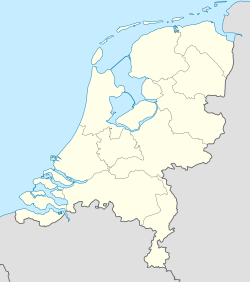| | ||||||||||||||||||||||||||||||||||||||||||||||||||||||||||||||
| ||||||||||||||||||||||||||||||||||||||||||||||||||||||||||||||
158 of 9889 municipal seats Seat tallies below only reflect affected municipalities | ||||||||||||||||||||||||||||||||||||||||||||||||||||||||||||||
| Turnout | 59.30% ( | |||||||||||||||||||||||||||||||||||||||||||||||||||||||||||||
|---|---|---|---|---|---|---|---|---|---|---|---|---|---|---|---|---|---|---|---|---|---|---|---|---|---|---|---|---|---|---|---|---|---|---|---|---|---|---|---|---|---|---|---|---|---|---|---|---|---|---|---|---|---|---|---|---|---|---|---|---|---|---|
This lists parties that won seats. See the complete results below. | ||||||||||||||||||||||||||||||||||||||||||||||||||||||||||||||
Municipal reorganization elections were held in the Netherlands in November 2002. They were controversially seen as a bellwether for the 2003 Dutch general election.
Contents
- Background
- Legislative
- Political geography / prior results
- Cabinet disintegration
- Campaign
- Bellwhether and forecasts
- Echt-Susteren
- Far-right involvement
- Campaigning by national party leaders
- Results
- Nationwide vote
- Results by municipality
- Analysis
- Lilian Marijnissen
- References
Over the course of April to June 2002, the Dutch government approved six new municipal mergers, which would take effect on 1 January 2003. This led to new elections in November 2002 across six reorganized municipalities: Oss (largest), Terneuzen, Zwijndrecht, Echt-Susteren, Hulst and Sluis (smallest). Half of these prospective municipalities were located in Zeeland; the others were located in Limburg (Echt-Susteren), South Holland (Zwijndrecht) and North Brabant (Oss). In the municipal elections of 1998, the Christian Democratic Appeal (CDA) won pluralities in 3 of these areas, while trailing the Socialist Party (SP) in Oss, the Labour Party (PvdA) in Zwijndrecht, and a local party in Sluis. Furthermore, if local parties are treated as a bloc, they outpolled the CDA in Echt-Susteren and Hulst, where they won outright majorities. Across these areas, the CDA was the strongest national contender, garnering 28'234 votes (22.2%). The CDA was followed by the Labour Party (PvdA), which received 15.4% of the vote.
In October 2002, internal strife within the Pim Fortuyn List (LPF) led to the collapse of the first Balkenende cabinet, triggering a snap election in January 2003. As a result, the municipal reorganization elections held the following month were treated as a tentative indicator of national trends, despite covering only newly merged municipalities. Analysts debated their relevance, with some arguing the elections reflected broader sentiment while others highlighted the distortions introduced by local grievances and the unique context of annexations. The SP was projected to strengthen its position in Oss, while the CDA was expected to perform well. Far-right activity surfaced in Zwijndrecht and Oss, though ultimately failed to gain traction. National party leaders, including the CDA's Jan Peter Balkenende, PvdA’s Wouter Bos, VVD's Gerrit Zalm, SP's Jan Marijnissen, and GroenLinks’ Paul Rosenmöller actively campaigned in the affected areas. On 6 November, Echt-Susteren became the election cycle's first municipality to vote; the rest followed on the 20th.
The CDA emerged as the overall winner, collecting 28,554 votes (23.7%) and leading in five of six new municipalities, with its strongest performance in Zwijndrecht. The SP dominated in Oss with 38.4% but did not achieve an outright majority. The PvdA came second overall with 15,963 votes (13.2%) but suffered a notable decline, particularly in Zwijndrecht where it lost its plurality. Local parties, although fragmented, performed well collectively, especially in Echt-Susteren and Hulst, where they collectively exceeded 50% of the vote. The far-right New National Party contested only Zwijndrecht and failed to win a seat. Analysts cautioned against drawing national conclusions from partisan results, citing local dynamics and the distorting effects of recent mergers, though the high turnout was attributed to the cabinet collapse. In Oss, 17-year-old Lilian Marijnissen—future leader of the SP—won a seat via preference votes, joining the municipal council in September 2003 after reaching the age of eligibility.
